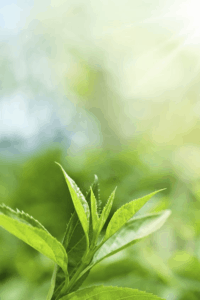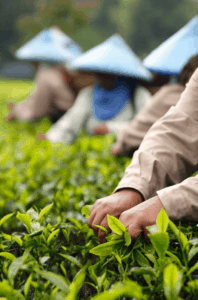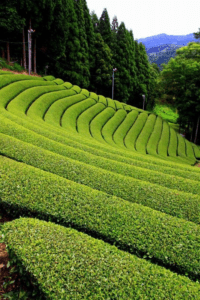
The flavor profile of green tea can vary significantly across different plantations, influenced by their unique cultivation methods and secrets. The primary factors that affect flavor include the soil, climate, and the expertise of the growers. Even when using the same tea species, variations in these elements can lead to distinct production processes and flavors.
Source: http://blog.davidstea.com/en/get-to-know-loose-leaf-tea/
Soil Composition
Soil is a critical determinant of tea quality, with each plantation possessing its own unique characteristics. Beyond the natural composition, the selection of soil and the application of fertilizers play pivotal roles. For instance, highland soils often appear red due to washing processes or the decomposition of limestone, while optimal tea-growing soil typically has a pH range of 4.5 to 5.5, indicating slight acidity.
Climate and Weather
Conditions Weather conditions, particularly temperature and humidity, are essential for cultivating green tea. Ideal growth areas often experience fog, resulting from significant temperature fluctuations between day and night. While tea plants can endure low temperatures, ice accumulation on the leaves can degrade their quality. In Japan, many tea plantations employ large fans during winter to prevent ice formation on the leaves. Furthermore, the aroma and flavor of tea are heavily influenced by temperature, with high-altitude regions yielding superior tea leaves but in smaller quantities, compared to warmer areas that produce higher yields but lower quality.
Source: http://chaehbae.tumblr.com/post/90942615222/tea-fields-zhejiang-china-awesome-amazing
The Role of Expertise
The human element is equally crucial in the tea production process. Skilled workers are essential at every stage, from cultivation to harvest, ensuring meticulous care to meet quality standards. For instance, tea leaves picked with two buds and one leaf are rich in polyphenols, which significantly enhance the color, aroma, flavor, and health benefits of the tea.
Source: http://www.trekearth.com/gallery/Asia/Indonesia/Java/Jawa_Barat/Ciwalini/photo633381.htm
Regional Varieties: Uji and Shizuoka When discussing Japanese tea, Uji, Kyoto, and Shizuoka are often at the forefront, each with its unique production methods and historical significance.
1. Uji, Kyoto:
The Heart of Traditional Tea Uji is renowned for its rich tea history. Initially, the area cultivated a diverse range of teas, but over time, it has become synonymous with matcha. This association is rooted in Zen Buddhism, as Kyoto is home to several prominent monasteries. Uji’s exceptional soil and traditional production techniques have resulted in world-famous teas that beautifully combine flavor and heritage.
Source: http://pin.it/YUO1SKu
2. Shizuoka:
The Birthplace of Modern Tea In contrast to Uji, Shizuoka has a distinct tea heritage. While matcha production is prevalent in Uji, Shizuoka’s farmers focus on a variety of other tea types, less influenced by Buddhist practices. This region is one of Japan’s largest green tea producers, contributing about 40% of the nation’s tea. Notably, Shizuoka is known for the Sencha Yabukita variety, celebrated for its robust flavor, aroma, and sweetness—attributes that differ from the matcha offerings of Kyoto.
Source: https://www.flickr.com/photos/ippei-janine/5721719180/




